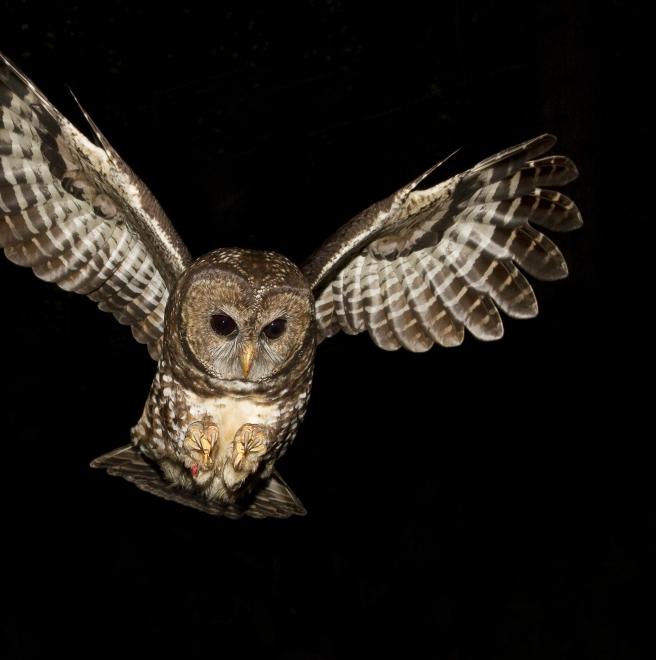

Already an endangered species, this bird of old-growth forests is projected to lose 98 percent of its current winter range by 2080, according to Audubon’s climate models. With the more aggressive Barred Owl already displacing this vulnerable species, climate might accelerate this decline even more. The summer season was not modeled as there was not enough data to do so.
Are the projected range maps different from the range maps in field guides? Find the answer here.
This medium-sized owl lives year-round in mature coniferous forests of western North America. In southern reaches of its range, it inhabits canyons and various forest types, but it prefers mature forests. It nests in a tree nook or old, abandoned nest, and preys on small- to medium-sized mammals—especially rodents. In recent years the Barred Owl has expanded into much of its range in the Pacific Northwest, competing with the Spotted Owl and displacing it from many key habitats.
Explore more birds threatened by climate change around the country.





















It's easier than you think to make a difference. Become an Audubon member today to help birds facing climate change.